Everything you need to know about kilns
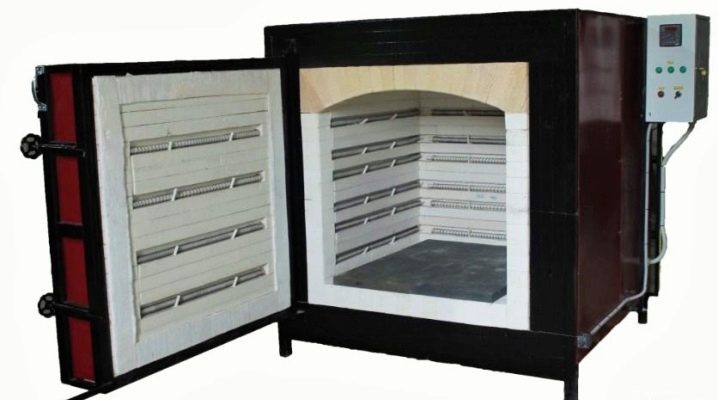
The strength and performance characteristics of ceramic products are formed under the influence of high temperatures during firing. Special kilns for firing help to achieve ideal performance. It is worth considering the features of such installations and popular models.
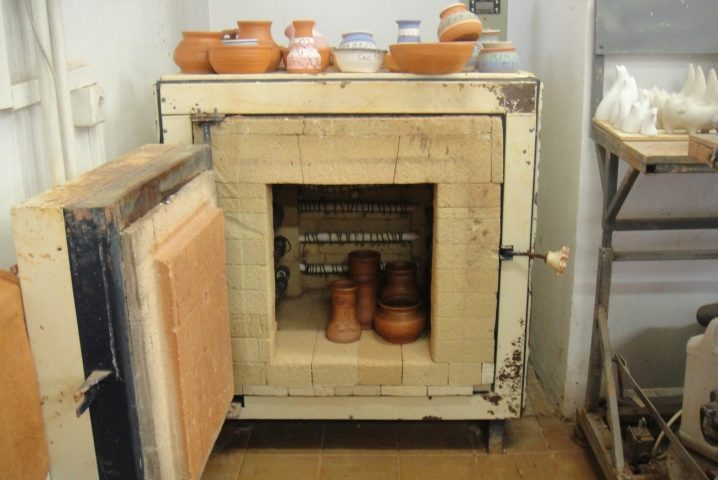
general description
Ceramic kiln - a special type of equipment that is in demand in pottery production and in private workshops. Clay products that have passed the firing process receive the necessary characteristics and a certain color shade, familiar to everyone.
To achieve the desired result and ensure the release of quality products, it is necessary to adjust the temperature regime and determine the duration of exposure to high temperatures on the material.
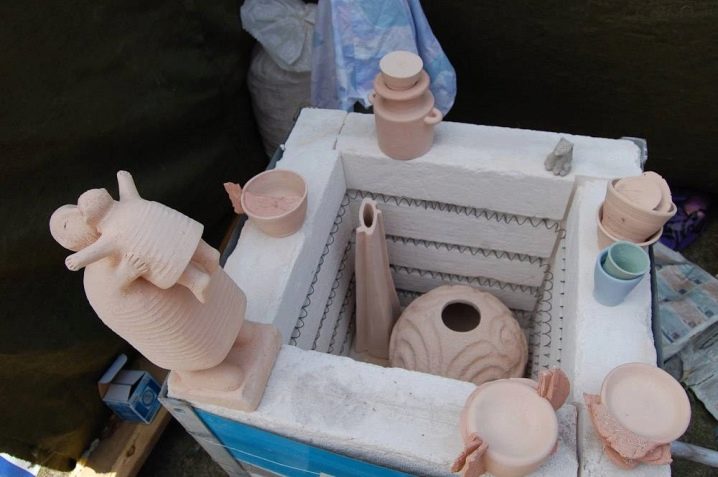
Only with a competent approach to the process, the elastic material - clay - will become solid and acquire the required strength.
The firing procedure is time-consuming, and the duration may vary depending on various factors, including:
- wall thickness of products;
- clay properties;
- furnace power.
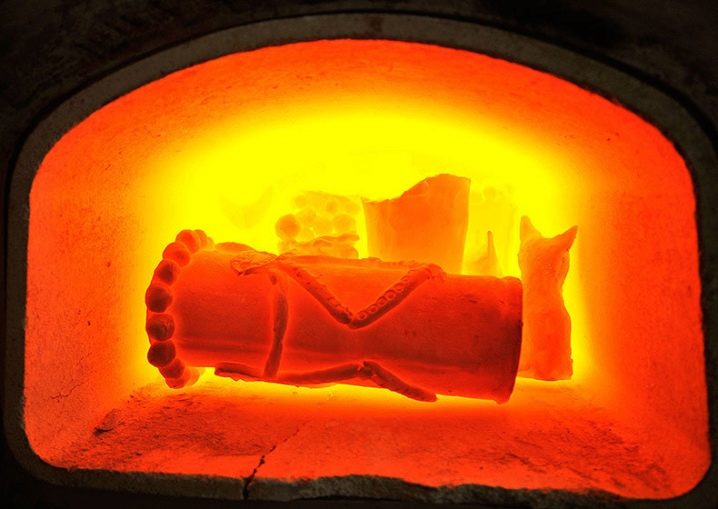
Before proceeding with the firing, it is necessary to become better acquainted with the equipment in which the main process takes place. It is worth starting with the device of a classic installation and figure out what components the design includes.
- Frame... For the manufacture of this element, stainless steel is mainly used. When making your own oven, an old refrigerator is suitable, the operation of which is no longer possible. The main task of the hull is to protect the external environment and other structural elements from high temperatures. The average sheet thickness of the steel outer casing is 2 mm.
- External thermal insulation. Represents a separate layer, for the creation of which fireclay bricks or other materials with low thermal conductivity and resistance to high temperatures are used. The performance of the apparatus depends on the qualities of the heat-insulating layer.
- Internal thermal insulation. In this case, preference is given to mineral or basalt wool, as well as perlite. Sheet asbestos is not recommended for use, since when heated, it begins to emit harmful substances that can harm the body.
- Camera... In it, the laying of clay products takes place in order to obtain durable ceramics. Also in the chamber there are heating elements that raise the air temperature and provide the necessary firing. As heaters, they mainly use nichrome spirals or air-type heating elements. The devices are installed in the groove provided by the design.
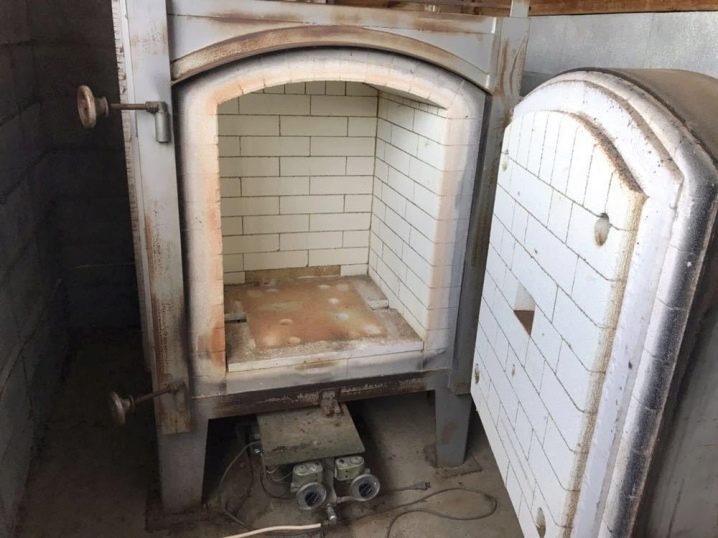
Now it's time to figure out how the installation works. Furnaces use different types of fuel, but regardless of this, they provide firing according to the standard scheme.
- Earthenware is pre-dried, only then placed in the cavity of the furnace. In this case, large blanks are placed in the lower part of the chamber, and then the pyramid is gradually assembled, leaving a small earthenware at the top.
- Next, the oven door is tightly closed and the temperature inside begins to gradually rise, bringing it to 200 degrees Celsius. At this temperature, the parts are heated for 2 hours.
- Then the temperature in the oven is raised again, setting 400 degrees Celsius, and the parts are allowed to warm up for another 2 hours.
- At the end, the heating is increased to 900 degrees and the heating devices are turned off.In some models, you have to extinguish the flame yourself. The products are left to cool in a chamber with the door tightly closed.
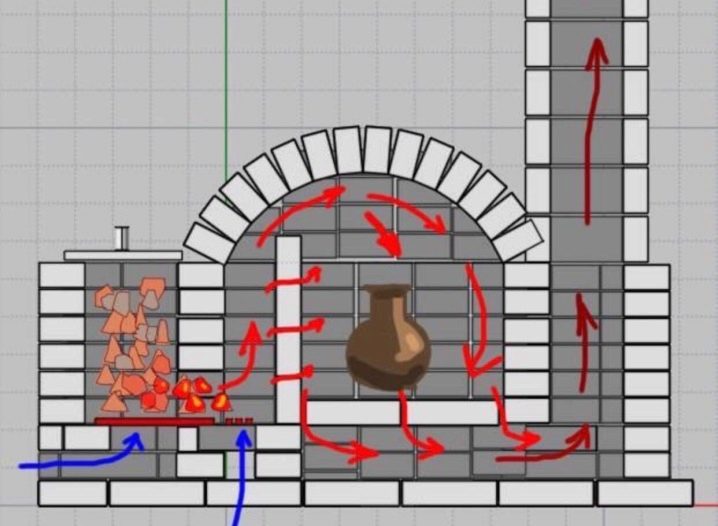
The last stage provides the ceramic with the necessary strength properties due to the uniform cooling of the hardened clay. The processed products have a long service life and excellent performance.
Varieties
Today, kilns are represented by a wide range of kilns from different manufacturers. Such installations are classified according to a number of characteristics, highlighting a mini-oven, dimensional models and other types. Each possible option is worth considering in more detail.

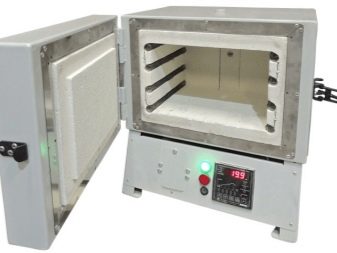
By arrangement of heating elements
In this category, ovens are divided into two types.
- Muffle... They are characterized by heating elements made of fire-resistant material with the corresponding name, which are placed around the chamber.
- Chamber... In this case, the heating sources are placed inside the chamber.

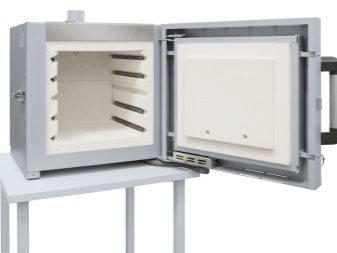
The latter are distinguished by low heat loss, therefore, they are more attractive. However, the first ovens make it possible to achieve high quality ceramic tiles and other products made of polymer or ordinary clay due to uniform heating.
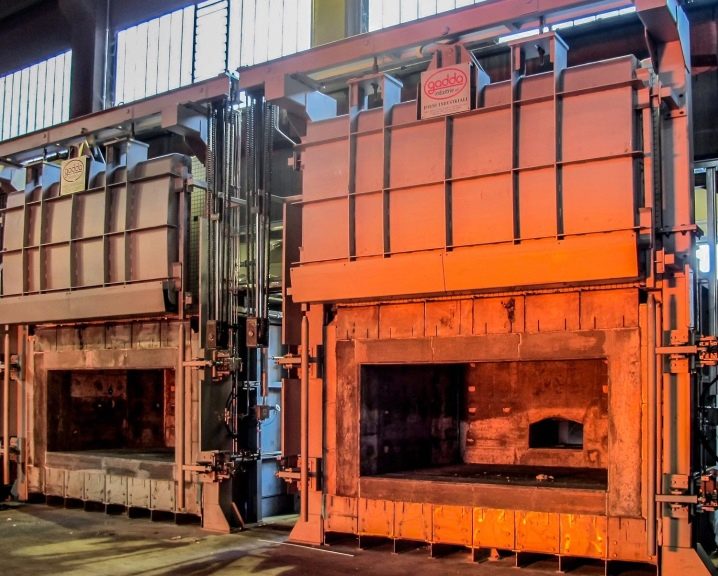
By type of chamber environment
The type of internal filling of the chamber determines the purpose of the use of the equipment. Stoves in this category are divided into three types.
- With an air environment. Such installations are called general purpose.
- Vacuum... Popular models.
- With protective atmosphere of gases... Heating is carried out in the atmosphere, which is formed by certain gases involved in the system.


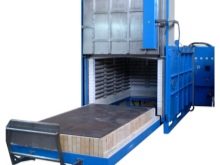
Manufacturers of recent furnaces often use nitrogen, helium, argon, and other nitrided gases to expand the functionality of their equipment.
By loading type
Here, the stoves are divided into three types.
- Horizontal... The pottery is loaded at the front of the structure.
- Tubular... The units are designed for the firing of artistic ceramics and are distinguished by a uniform distribution of heat in the chamber.
- Bell-type... The download is carried out at the top.
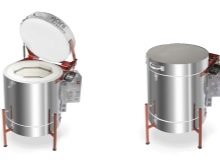
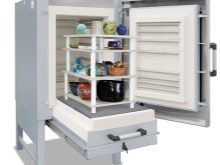
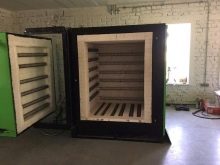
The latter are suitable for firing dimensional and non-decorative elements, therefore they are often found in the industrial or construction sector. Vertical equipment will be interesting for specialists with a limited budget. Such installations are inexpensive and still provide quality products.
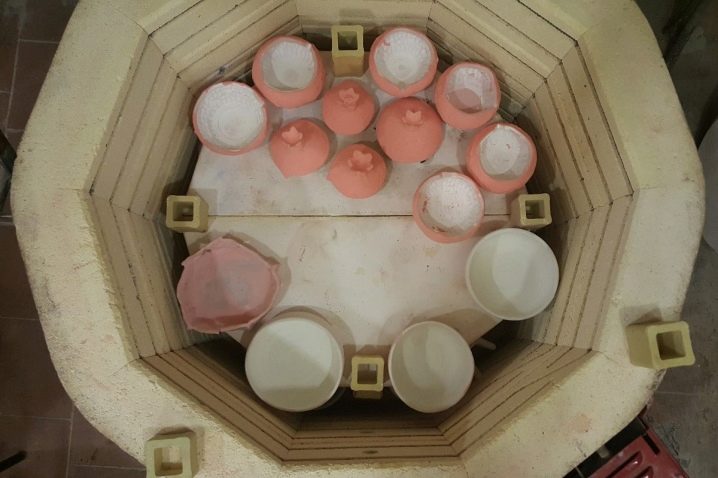
Peculiarity horizontal load lies in the need to assess the distance between the workpieces. A plus - excellent visibility of the tiers, which allows you to adjust the firing quality. Bell-type installations are distinguished by their high cost, but at the same time uniform firing.

By temperature
In this case, manufacturers change the design or purpose of the oven. The hottest installations are capable of heating the chamber up to 1800 degrees. This firing will result in white or orange ceramics. Less hot models allow you to get products in dark red or burgundy shades. Finally, low power units produce red ceramics.
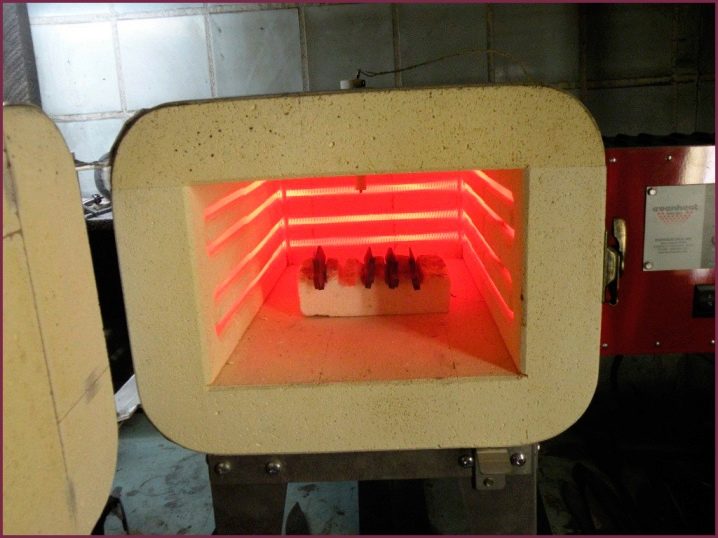
By type of energy source
Manufacturers produce the following types of ovens:
- gas;
- electrical installations;
- equipment that runs on solid fuels.
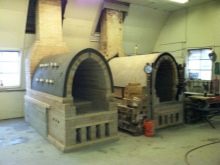

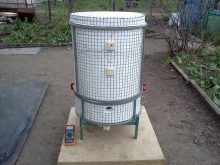
The first two types are actively used in the industrial field when working with large volumes. The latter are in demand in private workshops. Often, such ovens are assembled with their own hands or they turn to specialists for manufacturing.
Popular models
The kiln manufacturers offer a wide range of equipment with different characteristics to the craftsmen and owners of large enterprises. A rating of the top 5 popular models will speed up the process of choosing the right installation.
Furnace "Bossert Technology PM-1700 p"
Differs in compact dimensions and high performance. The design of the model provides for a multi-stage thermostat, with the help of which it is possible to achieve high firing accuracy and operational temperature control. The maximum heating temperature is 1150 degrees, the total power of the device is 2.4 kW. The unit operates on AC power, suitable for both professional use and for installation in a private workshop.
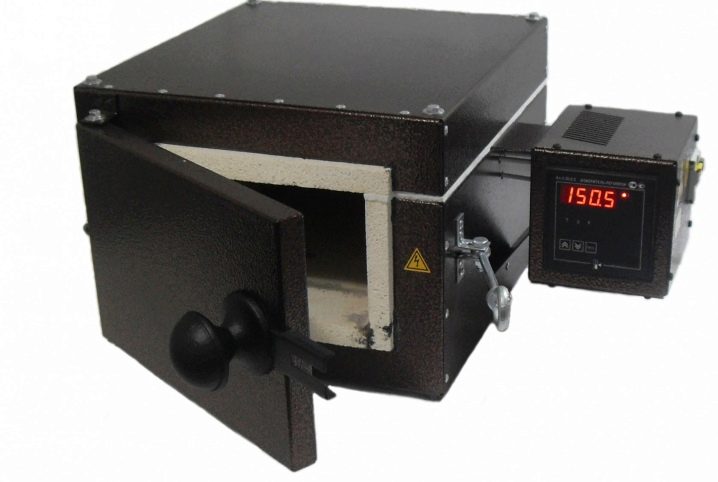
"ROSmuffel 18/1100 / 3kW / 220W"
A larger model that starts up when connected to a standard voltage network. The total volume of the working chamber is 80 liters, the maximum heating temperature reaches 11 thousand degrees, which allows the installation to be used for industrial purposes and for firing decorative clay elements. The features of the model include a software control unit for monitoring and adjusting temperature.
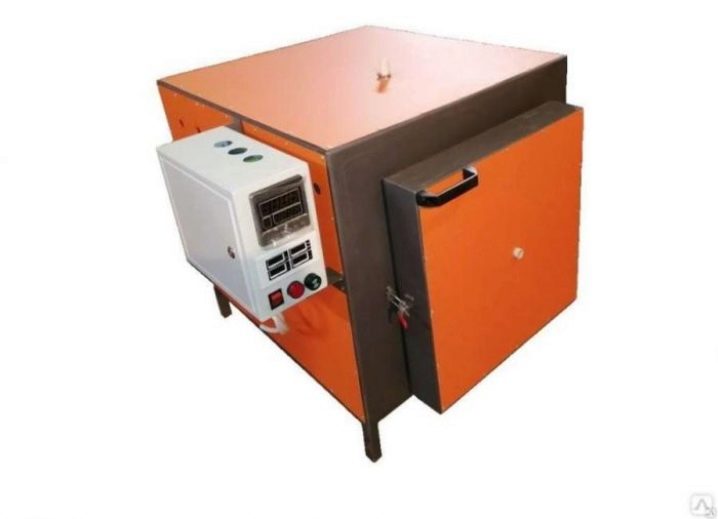
Furnace "Master 45"
Spacious kiln with robust and durable heating elements. The software allows you to organize reliable temperature control and achieve high quality clay firing. The manufacturer made a stainless steel housing, extending the life of the device, and also provided additional protection for the camera from damage by finishing with a light refractory material. The maximum heating temperature is 1300 degrees.
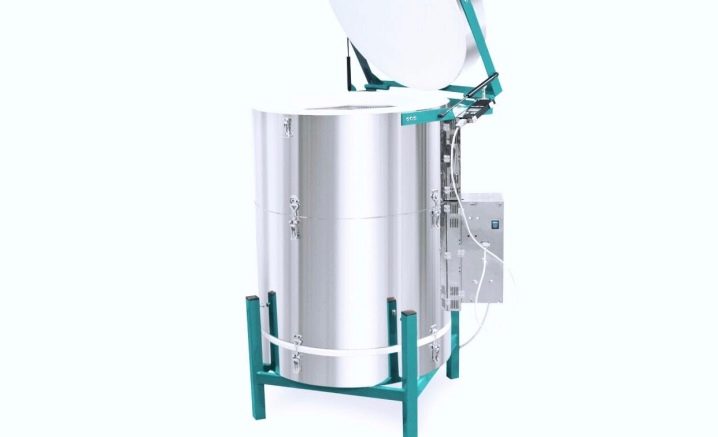
ARIES. 11. M. 00 "
The automated model supports 10 operating cycles and includes 4 ceramic heating modes. The maximum power of the installation reaches 24 kW, the operating temperature is 1100 degrees. The advantages of the device include light weight and compact size, which makes it possible to use the equipment at home.
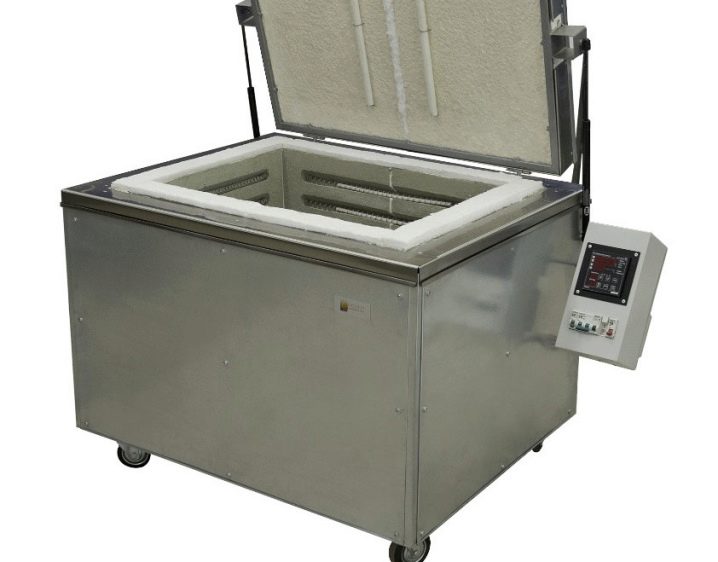
"Master 45 AGNI"
Model with a vertical type of loading of clay products. Heats the material up to 1250 degrees, ensuring high-quality firing. The chamber holds up to 42 liters, the power of the device is 3.2 kW. The equipment is used mainly in medium and large enterprises.

The nuances of choice
The choice of the furnace is determined by the purpose and tasks that the master sets for the device. For example, amateur ceramists should give preference to muffle units, while professionals and owners of large industrial facilities should choose a larger-scale version of the chamber type. When buying a kiln for firing, you should pay attention to the following nuances:
- firing volume per day;
- dimensions of products that are planned to be burned;
- format for loading ceramics;
- characteristics of the wiring.

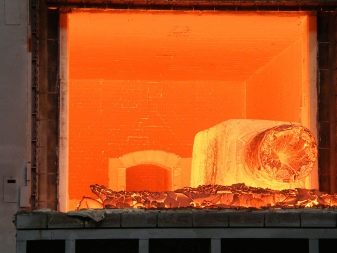
The latter is mandatory when choosing electrical models, since some manufacturers produce three-phase ovens. Also, when buying an installation, you should take into account your own budget and preferences regarding characteristics and structure.
The average price of installations for firing at home or in a workshop is 30 thousand rubles... For professional use, ovens are produced, the cost of which starts from 100 thousand rubles.

Operating tips
After purchasing or self-assembling a kiln for firing, it is worth considering a few recommendations for its use. For example, automated gas or electric models will require software installation. After that, it remains only to adjust the temperature at the temperature sensor and start the unit into operation. Additional tips for operating your ovens can also come in handy.
- Before connecting the stove, it is necessary to dry the clay products in the open air or in a special room with excellent ventilation.
- When preparing for firing, the clay elements must be carefully distributed over the oven chamber and covered with a lid.
- The firing process is long and should be taken into account. On average, it will take 14 to 16 hours to harden large elements.
- The chamber must not be opened during firing in order not to impair the result. To control the process, it is worthwhile to provide a fireproof glass window.
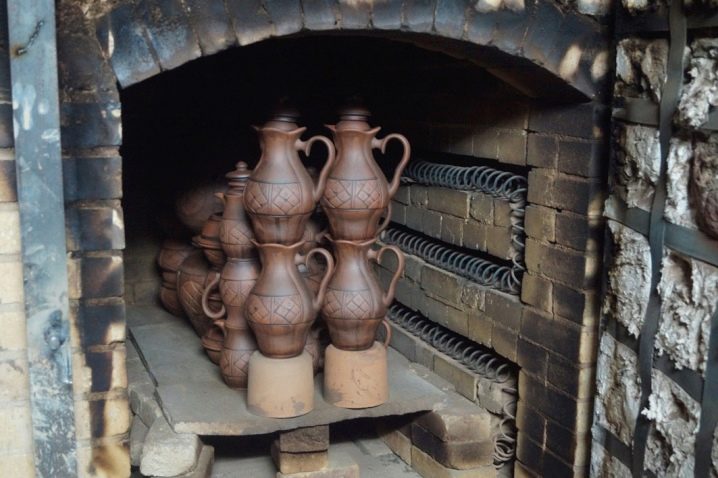
When assembling a wooden kiln for firing, it must be borne in mind that in such structures it will be more difficult to withstand the required technology and maintain the temperature.













The comment was sent successfully.